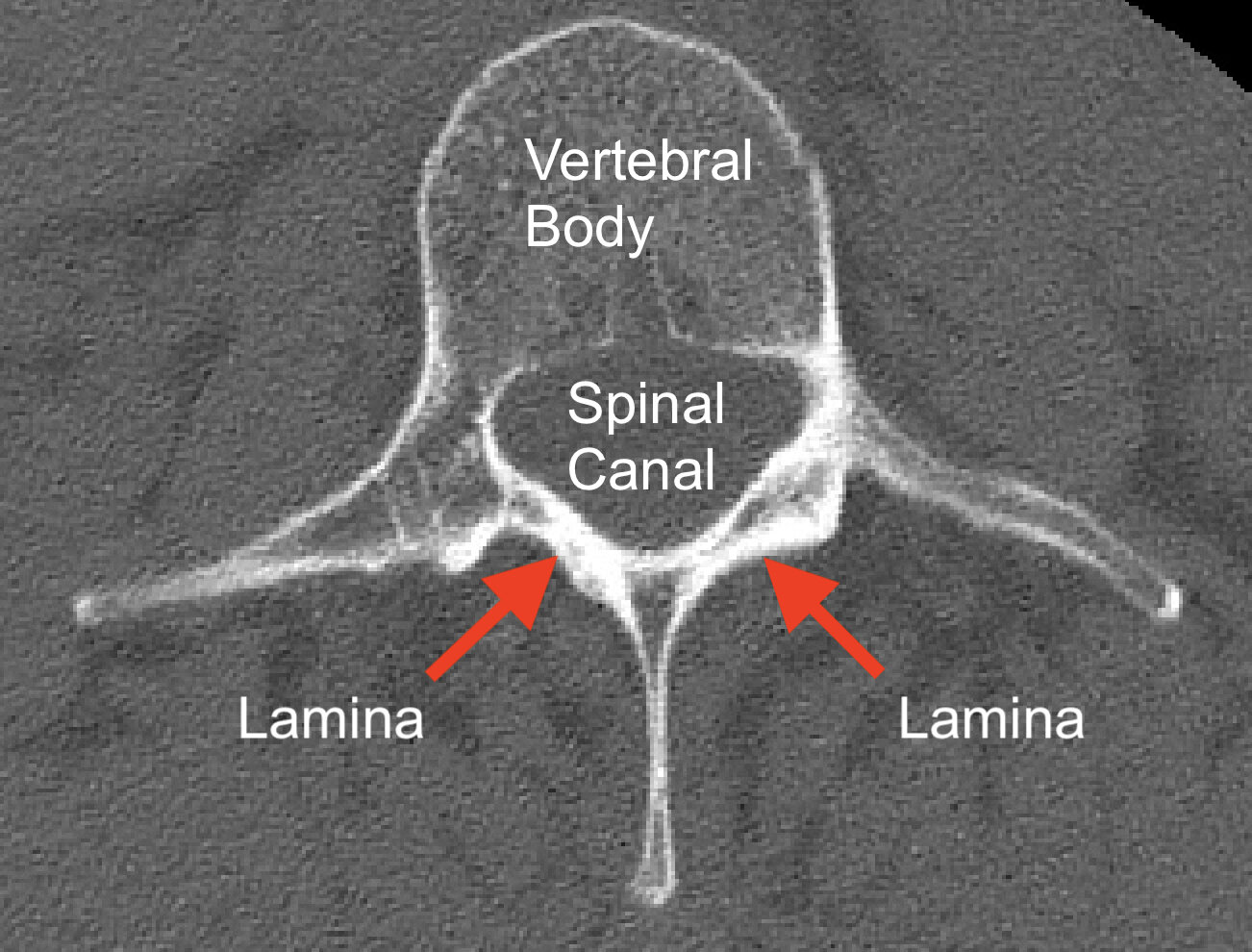Laminectomy
A laminectomy is a general spinal procedure used for a variety of disorders in which a part of a spinal vertebra called the lamina is removed through an incision in the back. Laminectomy is commonly used to treat spinal stenosis, a condition in which the spinal canal is narrowed due to degenerative arthritis, an injury, or a growth or mass, and there is pressure on the nerve roots or spinal cord. A laminectomy can also be used to gain access to the spinal canal to treat spine tumors.
Below is a cross-section of a lumbar vertebra from a CT scan showing the location of the lamina.
Cross-section of lumbar vertebra from a CT scan showing location of the lamina (red arrows), the spinal canal, and the vertebral body.
Laminectomy is a flexible tool that can be used in a variety of settings and at any level in the spine. Below is a series of illustrations showing a model of the lumbar spine (low back) viewed from behind along with the locations of nerve roots and the bone that is removed in a lumbar laminectomy.
Lumbar laminectomy. On the left is a view of the lumbar spine from behind. In the center panel, projections of the lumbar nerve roots beneath the bone are shown in dashed yellow lines. If there is compression of these nerves from degenerative arthritis, for example, a laminectomy can be used to relieve the pressure. The blue region on the right shows the bone that is removed in a laminectomy.


